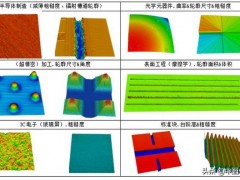方案优势
Two-dimensional velocity fields around a freely swimming freshwater black shark fish in longitudinal (XZ) plane and
transverse (YZ) plane are measured using digital particle image velocimetry (DPIV). By transferring momentum to
the fluid, fishes generate thrust. Thrust is generated not only by its caudal fin, but also using pectoral and anal fins,
the contribution of which depends on the fish’s morphology and swimming movements. These fins also act as roll
and pitch stabilizers for the swimming fish. In this paper, studies are performed on the flow induced by fins of freely
swimming undulatory carangiform swimming fish (freshwater black shark, L = 26 cm) by an experimental hydrodynamic
approach based on quantitative flow visualization technique. We used 2D PIV to visualize water flow pattern
in the wake of the caudal, pectoral and anal fins of swimming fish at a speed of 0.5–1.5 times of body length per
second. The kinematic analysis and pressure distribution of carangiform fish are presented here. The fish body and fin
undulations create circular flow patterns (vortices) that travel along with the body waves and change the flow around
its tail to increase the swimming efficiency. The wake of different fins of the swimming fish consists of two counterrotating
vortices about the mean path of fish motion. These wakes resemble like reverse von Karman vortex street
which is nothing but a thrust-producing wake. The velocity vectors around a C-start (a straight swimming fish bends
into C-shape) maneuvering fish are also discussed in this paper. Studying flows around flapping fins will contribute to
design of bioinspired propulsors for marine vehicles.
实验设备
平台首页|
用2D原子核扫描关键技术深入研究意志摄食海龟的井水流体力学加速反应机理用做游船船舰检查科学仪器
核心提示:方案优势
Two-dimensional velocity fields around a freely swimming freshwater black shark fish in longitudinal (XZ) plane a
打赏
免责声明:
本网站部分内容来源于合作媒体、企业机构、网友提供和互联网的公开资料等,仅供参考。本网站对站内所有资讯的内容、观点保持中立,不对内容的准确性、可靠性或完整性提供任何明示或暗示的保证。如果有侵权等问题,请及时联系我们,我们将在收到通知后第一时间妥善处理该部分内容。
本网站部分内容来源于合作媒体、企业机构、网友提供和互联网的公开资料等,仅供参考。本网站对站内所有资讯的内容、观点保持中立,不对内容的准确性、可靠性或完整性提供任何明示或暗示的保证。如果有侵权等问题,请及时联系我们,我们将在收到通知后第一时间妥善处理该部分内容。

扫扫二维码用手机关注本条新闻报道也可关注本站官方微信账号:"xxxxx",每日获得互联网最前沿资讯,热点产品深度分析!
0 条相关评论
推荐图文
推荐新闻资讯
点击排行
 手机版|
手机版|

 二维码|
二维码|











